Spring is finally making an appearance, and with it many teachers are enjoying a spring break—or beginning to make plans for summer break. For many of us, time off means an opportunity to invest in professional development. The IRA 59th Annual Conference is just around the corner, and many other organizations take advantage of the traditional school schedule to hold conferences during the summer months.
Technology has become an ever-present facet of our lives, and few of us are without our means of staying connected regardless of where we are. Phones, tablets, and laptops have allowed us to freely utilize the benefits of technology when we are away from home. When it comes time to attend a conference, these apps and websites have many advantages to offer the tech-savvy traveler.
KAYAK
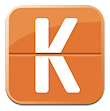 Available as both a mobile app and a website, this service not only has the functionality to allow travelers to book flights, hotels, and car rentals, but will also help you manage on a budget. It is an efficient search engine with a reputation for finding the best deals available. Even better, you can set push notifications to let you know if a price drop occurs that might change your plans.
Available as both a mobile app and a website, this service not only has the functionality to allow travelers to book flights, hotels, and car rentals, but will also help you manage on a budget. It is an efficient search engine with a reputation for finding the best deals available. Even better, you can set push notifications to let you know if a price drop occurs that might change your plans.
TripAdvisor
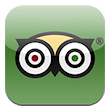 Similar to KAYAK, TripAdvisor offers the ability to make arrangements for flights and lodgings. Users can also find restaurants and attractions, with the ability to search from the user's current location. The biggest advantage of this service is the user reviews and photos, which are essential for visiting an unfamiliar location. Another great feature is a discussion forum, which allows travelers to interact with other users and glean useful information.
Similar to KAYAK, TripAdvisor offers the ability to make arrangements for flights and lodgings. Users can also find restaurants and attractions, with the ability to search from the user's current location. The biggest advantage of this service is the user reviews and photos, which are essential for visiting an unfamiliar location. Another great feature is a discussion forum, which allows travelers to interact with other users and glean useful information.
HootSuite
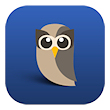 Conferences offer incredible opportunities to learn, but it is impossible to be everywhere at once. HootSuite can help by allowing you to monitor all of your social media accounts—as well as specific hashtags, such as #IRA14—all from one app. Attendees want to get the most out of their limited time, and sometimes the choice of which session to attend is excruciating. Maximize your learning experience by keeping in touch with other attendees through social media—find out the important points from sessions you couldn't attend, learn where the action is if you find yourself in a session that isn't what you hoped, and interact with others to reflect on what you have learned.
Conferences offer incredible opportunities to learn, but it is impossible to be everywhere at once. HootSuite can help by allowing you to monitor all of your social media accounts—as well as specific hashtags, such as #IRA14—all from one app. Attendees want to get the most out of their limited time, and sometimes the choice of which session to attend is excruciating. Maximize your learning experience by keeping in touch with other attendees through social media—find out the important points from sessions you couldn't attend, learn where the action is if you find yourself in a session that isn't what you hoped, and interact with others to reflect on what you have learned.
TripIt
 This travel organizer imports reservation information from confirmation emails and sets up an itinerary to keep you organized and running on schedule. You can also add your own events, check weather conditions, see time zone changes, and more. Even better, it integrates with Apple, Outlook, and Google calendars to keep all of your events and notifications in one place. From travel details to conference session locations to dinner plans, every part of your travel experience can be brought together to maximize your enjoyment of your time away.
This travel organizer imports reservation information from confirmation emails and sets up an itinerary to keep you organized and running on schedule. You can also add your own events, check weather conditions, see time zone changes, and more. Even better, it integrates with Apple, Outlook, and Google calendars to keep all of your events and notifications in one place. From travel details to conference session locations to dinner plans, every part of your travel experience can be brought together to maximize your enjoyment of your time away.
Concur
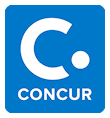 If you are traveling on someone else's dime or are able to deduct your expenses, it is vital to keep excellent records in order to be properly reimbursed. This service allows you to keep track of all of your expenses, photograph receipts so they won't be lost, and itemize costs. The entire process of organizing and submitting travel expenses can be paperless and worry-free. As an added bonus, Concur integrates with TripIt to give travelers an even more streamlined experience.
If you are traveling on someone else's dime or are able to deduct your expenses, it is vital to keep excellent records in order to be properly reimbursed. This service allows you to keep track of all of your expenses, photograph receipts so they won't be lost, and itemize costs. The entire process of organizing and submitting travel expenses can be paperless and worry-free. As an added bonus, Concur integrates with TripIt to give travelers an even more streamlined experience.
Evernote
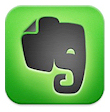 When attending conference sessions, taking notes is a must. Simplify things and go the paperless route—no more searching for a pen or losing loose pages. Evernote is one of those apps that does just about everything you could want—import slides and pictures, type notes, make lists, record audio, and more. When you are finished, email the final product to yourself or your colleagues or share via social media.
When attending conference sessions, taking notes is a must. Simplify things and go the paperless route—no more searching for a pen or losing loose pages. Evernote is one of those apps that does just about everything you could want—import slides and pictures, type notes, make lists, record audio, and more. When you are finished, email the final product to yourself or your colleagues or share via social media.
Triposo
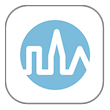 This service offers downloadable travel guides for destinations around the world—including New Orleans, if you are planning on attending IRA 2014. The guides offer general information and photographs for locations. It also suggests points of interest and boasts interactive maps that allow users to zoom in, find a nearby attraction, and tap for details and social media reviews. Users can also find contact information, book tours, and bookmark favorites within searches. If you aren't sure what to do with your downtime, this app has all the information you need!
This service offers downloadable travel guides for destinations around the world—including New Orleans, if you are planning on attending IRA 2014. The guides offer general information and photographs for locations. It also suggests points of interest and boasts interactive maps that allow users to zoom in, find a nearby attraction, and tap for details and social media reviews. Users can also find contact information, book tours, and bookmark favorites within searches. If you aren't sure what to do with your downtime, this app has all the information you need!
IRA 2014 App
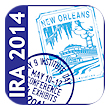 Finally, as a tech savvy conference attendee, you should always check to see if there is an app available for the big event. If you are heading to New Orleans this week for the IRA’s 59th Annual Conference, make sure to download the official app. It allows you to plan your itinerary, search for sessions, learn about upcoming events, speakers, and exhibitors, and get the most up-to-date information. You can even download maps of the event site and find sessions based on your current location!
Finally, as a tech savvy conference attendee, you should always check to see if there is an app available for the big event. If you are heading to New Orleans this week for the IRA’s 59th Annual Conference, make sure to download the official app. It allows you to plan your itinerary, search for sessions, learn about upcoming events, speakers, and exhibitors, and get the most up-to-date information. You can even download maps of the event site and find sessions based on your current location!
These apps and services are only the tip of the iceberg—an enormous variety of similar products are available to meet your needs and suit your tastes. The learning opportunities offered by attending a conference aren't confined to the physical location of the event, so take advantage of the chance to put some technology tools to the test while you travel and reap the benefits!
 Lindsey Fuller is a sixth grade teacher in Decatur, Illinois. Her interests are classroom technology integration, literacy instruction, and Common Core curriculum development and implementation. You can read more from Lindsey on these topics at her blog, Tales of a 6th Grade Classroom.
Lindsey Fuller is a sixth grade teacher in Decatur, Illinois. Her interests are classroom technology integration, literacy instruction, and Common Core curriculum development and implementation. You can read more from Lindsey on these topics at her blog, Tales of a 6th Grade Classroom.